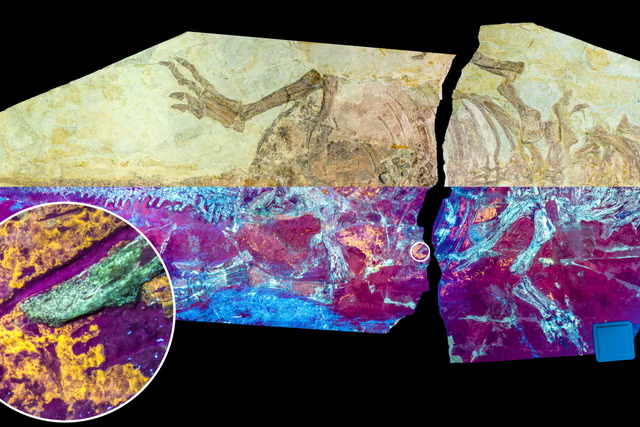Scientists may have taken one step closer to solving a centuries-old conundrum about the sun's magnetic field.
The sun's powerful magnetic field is responsible for the sunspots that spit out dramatic solar flares and coronal mass ejections, but solar scientists have been puzzled over how deep into our star the magnetic field reaches.
Now, according to a new paper in the journal Nature, the magnetic field may originate a measly 20,000 miles beneath the sun's surface, significantly less deep than previously thought.
"Our paper puts forth a new hypothesis for how the Sun generates its magnetic field: we believe the Sun's magnetic field is generated near its surface, in contrast to previous models which assumed it is generated deep within the Sun," Daniel Lecoanet, an assistant professor of engineering sciences and applied mathematics at Northwestern's McCormick School of Engineering, told Newsweek. "A better understanding of the Sun's magnetic field can help us make predictions about solar storms."
The sun's magnetic field is generated by a process known as the solar dynamo. The outer third of the sun—stretching about 120,000 miles—is known as the convection zone, and consists of hot plasma that rises, cools and then sinks in a continuous cycle that plays a crucial role in generating the sun's magnetic field.
"If the plasma which constitutes the Sun was completely stationary, we know the Sun's magnetic field would decay in time, and before long, there would be no sunspots [regions of strong magnetic field] or other solar activity," Lecoanet said.
"However, the plasma in the Sun is moving around, and that motion is able to regenerate and maintain the Sun's magnetic field. This is called the dynamo effect, and must be occurring, otherwise there would be no sun spots! While this basic picture has been known for over a century, the details of this dynamo effect have eluded scientists."
The magnetic field was originally thought to originate deep within our star, but this would result in certain solar features that aren't seen, such as strong magnetic fields at high latitudes, and doesn't explain how sunspots follow the sun's magnetic cycle.
"Previous work assumed the magnetic field was generated about 30 percent [into] the Sun, which corresponds to about 130,000 miles below the surface. That deep in the Sun, the winds get weaker the further you descend into the Sun, and these differences in wind speeds may generate magnetic fields. However, previous work has shown that it is very difficult to get the magnetic field from such depths all the way up to the surface," Lecoanet said.
In the new paper, the researchers describe how they modeled the sun's magnetic field using new numeral simulations, which accounted for special cycles of gas and plasma flowing within the sun that vary with latitude.
"Our new work suggests the Sun's magnetic field is generated by winds located about 1-5 percent into the Sun, which corresponds to about 20,000 miles below the surface," researchers said. "The winds in the Sun get stronger the deeper you go until you reach a depth of about 5 percent. The difference in the wind speed at the surface vs deeper into the Sun can amplify magnetic fields via a process known as the 'magnetorotational instability.'"
This process is well-known in astrophysics as a way of explaining the behavior of plasma orbiting black holes, but had not been thought to be important in the sun until this work, Lecoanet said.
"We specifically focused our attention on this near-surface region precisely because we thought the conditions were right for the magnetorotational. Our calculations show that indeed this process is occurring near the surface of the Sun," Lecoanet said. "Furthermore, our calculations show that the magnetic fields and winds produced by the magnetorotational instability match certain observed features of the Sun [the "torsional oscillations" and helicity patterns].
"Previous theories, which assume the field is generated deep within the Sun, are not able to match these features. The surprising match to observations is strong evidence in favor of our new hypothesis that the Sun's magnetic field is generated near its surface."
The researchers hope that the new findings can help scientists predict solar weather like solar flares and coronal mass ejections, which can cause geomagnetic storms like the one that sparked auroras across the world on May 10.
"We hope our new theory for how the Sun generates its magnetic field will lead to more accurate predictions of solar storms, helping us prepare for massive solar storms—even stronger than the one that hit a couple of weeks ago—that might hit us in the future," Lecoanet said.
This could be important for predicting storms that could cause damage to satellites, trigger radio blackouts, and cause issues with the electrical grid.
The Carrington Event in 1859 is thought to have been the strongest solar flare and geomagnetic storm in history, triggering fires in telegraph stations.
"In that strongest-ever Carrington Event, there were reports of telegraph lines sparking with the voltages induced in them," Alan Woodward, a professor of computer science and space weather expert at the University of Surrey, previously told Newsweek. "If that were to happen today, you can imagine just how much electronic equipment we depend upon and extrapolate how it is disruptive on Earth."
Even the May 10 storm triggered GPS systems to fail for some farming equipment, but a future Carrington-level storm could be catastrophic without warning.
"While the recent solar storms were powerful, we're worried about even more powerful storms like the Carrington Event," Lecoanet said in a statement. "If a storm of similar intensity hit the United States today, it would cause an estimated $1 trillion to $2 trillion in damage.
"Although many aspects of solar dynamics remain shrouded in mystery, our work makes huge strides in cracking one of the oldest unsolved problems in theoretical physics and opens the way to better predictions of dangerous solar activity."
Do you have a tip on a science story that Newsweek should be covering? Do you have a question about solar storms? Let us know via science@newsweek.com.
Disclaimer: The copyright of this article belongs to the original author. Reposting this article is solely for the purpose of information dissemination and does not constitute any investment advice. If there is any infringement, please contact us immediately. We will make corrections or deletions as necessary. Thank you.



